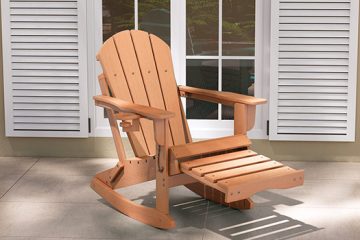In today’s fast-paced business world, call centers play a crucial role in providing excellent customer service and support. To ensure that call center agents can perform their tasks efficiently and effectively, it is essential to equip them with the right tools, including high-quality headsets. When choosing headsets for call centers or offices, there are several must-have features to consider.
Noise Cancellation
One of the most important features to look for in headsets for call centers is noise cancellation. Call center environments can be noisy, with multiple agents talking simultaneously, background chatter, and other distractions. Noise-canceling headsets help to reduce these distractions, allowing agents to focus on their calls and provide better customer service.
Active Noise Cancellation (ANC)
Active Noise Cancellation (ANC) is a technology that uses microphones to detect and analyze ambient noise, then generates an opposite sound wave to cancel it out. This results in a significantly reduced background noise, enabling agents to hear their callers more clearly and concentrate on their conversations.
Passive Noise Cancellation
Passive noise cancellation relies on the headset’s physical design to block out external noise. This is achieved through the use of ear cups that fit snugly around the ears, creating a seal that prevents sound from entering. While not as effective as ANC, passive noise cancellation can still provide a decent level of noise reduction in call center environments.
Comfort and Ergonomics
Call center agents often wear headsets for extended periods, making comfort and ergonomics crucial factors to consider when selecting headsets for offices or call centers.
Lightweight Design
Lightweight headsets reduce the strain on the head and neck, preventing fatigue and discomfort during long shifts. Look for headsets made from lightweight materials, such as plastics or aluminum, that don’t compromise on durability.
Adjustable Headbands and Ear Cups
Headsets with adjustable headbands and ear cups allow agents to customize the fit to their preferences, ensuring maximum comfort. This is particularly important for call centers with shared headsets, as each agent can adjust the headset to their liking.
Cushioned Ear Pads
Soft, cushioned ear pads provide a comfortable fit and help to reduce pressure on the ears. Look for headsets with breathable, moisture-wicking materials to prevent heat buildup and sweat during long wear.
Audio Quality
Clear and crisp audio quality is essential for effective communication in call centers. Headsets with superior audio quality enable agents to hear callers clearly and vice versa, reducing the need for repetition and improving overall customer satisfaction.
Wideband Audio
Wideband audio, also known as HD audio, offers a broader frequency range than traditional narrowband audio. This results in clearer, more natural-sounding voice transmission, making it easier for agents and callers to understand each other.
Noise-Canceling Microphones
Noise-canceling microphones filter out background noise, ensuring that the caller hears only the agent’s voice. This is particularly important in busy call center environments, where background chatter and other distractions can interfere with communication.
Connectivity and Compatibility
When choosing headsets for call centers or offices, it’s important to consider connectivity and compatibility with existing systems and devices.
USB and 3.5mm Connections
Headsets with USB and 3.5mm connections offer versatility and compatibility with a wide range of devices, including computers, phones, and softphones. USB headsets often provide additional features, such as in-line controls and built-in sound cards, while 3.5mm connections are more universal and can be used with a variety of devices.
Wireless Connectivity
Wireless headsets, such as those using Bluetooth or DECT technology, provide agents with greater freedom of movement and reduce cable clutter in the workspace. When selecting wireless headsets, consider factors such as battery life, range, and ease of connectivity.
Compatibility with Softphones and VoIP Systems
Ensure that the headsets you choose are compatible with your call center’s softphone or VoIP system. Many headset manufacturers offer models specifically designed for popular platforms, such as Skype for Business, Cisco, and Avaya.
Durability and Reliability
Call center headsets are subjected to daily wear and tear, making durability and reliability essential considerations.
Sturdy Construction
Look for headsets with sturdy construction, such as reinforced cables, strong plastics, and metal components where necessary. This helps to ensure that the headsets can withstand the rigors of daily use in a busy call center environment.
Replaceable Parts
Headsets with replaceable parts, such as ear pads, cables, and microphone booms, can help extend the life of the headset and reduce replacement costs. This is particularly important for call centers with high headset turnover or shared headsets.
Warranty and Support
Choose headsets from manufacturers that offer comprehensive warranties and reliable customer support. This ensures that any issues or defects can be quickly addressed, minimizing downtime and maintaining productivity in the call center.
Additional Features
Beyond the essential features, there are several additional features that can enhance the functionality and usability of headsets for call centers and offices.
In-Line Controls
In-line controls, such as volume adjustment, mute, and call answer/end buttons, provide agents with easy access to frequently used functions without interrupting their workflow. This can help improve efficiency and reduce the need for manual adjustments on the connected device.
Acoustic Shock Protection
Acoustic shock protection safeguards agents against sudden, loud noises that can cause discomfort or even hearing damage. This feature is particularly important in call centers, where agents may be exposed to unexpected sounds, such as feedback or loud outbursts from callers.
Busy Light Indicators
Some headsets feature busy light indicators that alert colleagues when an agent is on a call, helping to minimize interruptions and maintain productivity. This is especially useful in open-plan offices or call centers where visual cues are important for effective communication and collaboration.
Conclusion
When selecting headsets for call centers or offices, it’s crucial to consider a range of factors, including noise cancellation, comfort and ergonomics, audio quality, connectivity and compatibility, durability and reliability, and additional features. By choosing headsets that meet these criteria, you can ensure that your call center agents have the tools they need to provide exceptional customer service and support.
Investing in high-quality headsets for your call center or office can lead to improved productivity, reduced worker fatigue, and increased customer satisfaction. Take the time to evaluate your specific needs and choose headsets that will support your team in delivering the best possible results.




